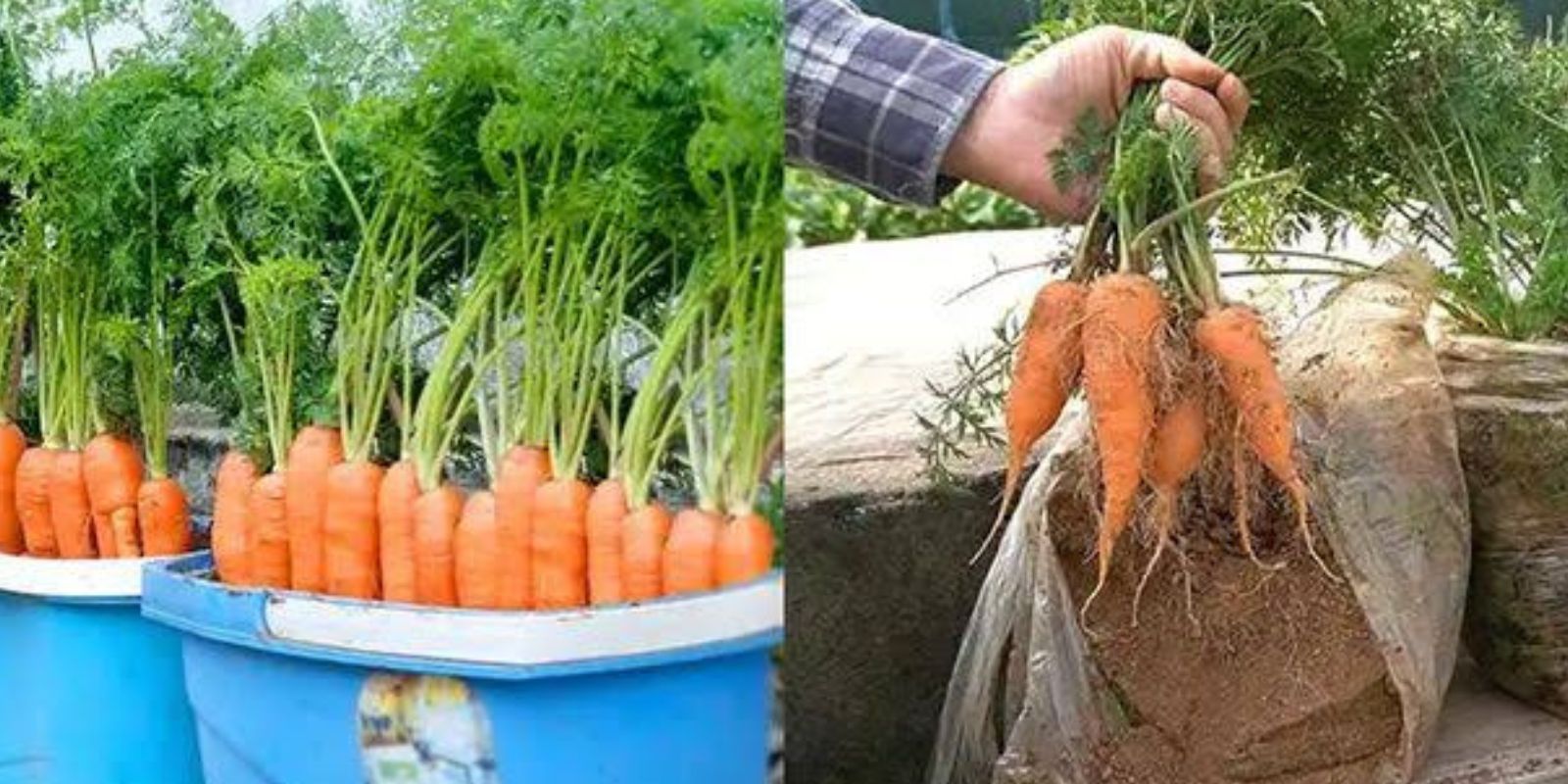Growing your own vegetables at home has never been easier or more rewarding, and carrots are an excellent choice for gardeners of all levels. What if I told you that you could start growing carrots with just a single carrot? Yes, it’s possible, and this method is perfect for small spaces, including balconies, patios, and urban gardens. Let’s dive into a detailed guide on how to grow carrots in containers using a carrot top.
Why Grow Carrots in Containers?
Carrots are a versatile vegetable packed with nutrients like beta-carotene, vitamin K, and potassium. Growing them at home offers several benefits:
- Space-efficient: Perfect for small spaces or urban living.
- Fresh produce: Enjoy pesticide-free, organic carrots.
- Educational: Great for teaching kids about gardening.
- Year-round cultivation: Carrots thrive in containers throughout the year, especially in moderate climates.
What You Need to Get Started
Before we begin, gather the following materials:
- A carrot: Use a fresh, healthy carrot with its top intact.
- A deep container: At least 12 inches deep with good drainage holes.
- Loose, sandy soil: Carrots grow best in well-draining soil. Mix garden soil with sand and compost for best results.
- Watering can: For consistent moisture.
- Sunlight: A sunny spot where the container can get 6-8 hours of sunlight daily.
Step-by-Step Guide to Growing Carrots from a Single Carrot
1. Prepare Your Container
Carrots need deep containers to grow properly because their roots can extend several inches. Choose a pot at least 12 inches deep and wide enough to accommodate multiple plants if desired. Ensure the pot has drainage holes to prevent waterlogging.
2. Prepare the Carrot Top
- Cut the carrot top, leaving about 1-2 inches of the root intact.
- You won’t regrow a full carrot from the top, but it will sprout new greens, which eventually lead to seeds or provide a basis for further growth.
3. Plant the Carrot Top
- Fill your container with loose, sandy soil, leaving about an inch of space from the rim.
- Place the carrot top in the center of the soil, cut side down, and gently press it into the soil.
- Cover the bottom half of the carrot top with soil, leaving the green part exposed.
4. Water the Soil
Water the soil immediately after planting to settle it around the carrot top. Keep the soil moist but not soggy. Overwatering can lead to rot, so aim for consistent moisture.
5. Position the Container
Place the container in a sunny location where it can receive 6-8 hours of sunlight daily. Carrots thrive in bright light, so choose a spot with ample sunlight or use a grow light if you’re gardening indoors.
6. Monitor Growth
- Within a week or two, you should see new green shoots emerging from the carrot top.
- If planting multiple carrot tops, thin out weaker shoots to allow stronger ones to thrive.
7. Encourage Root Growth
Although the carrot top itself won’t produce a new root, its greens can be used for culinary purposes, or the plant can be left to flower and produce seeds for future planting.
8. Care and Maintenance
- Water regularly: Keep the soil evenly moist, especially during dry spells.
- Fertilize occasionally: Use a balanced, organic fertilizer to promote healthy foliage.
- Watch for pests: Carrots in containers are less prone to pests but still monitor for aphids or mites.
9. Harvesting and Beyond
Once the carrot greens have matured or if the plant flowers, you can use the greens in salads or soups. If the plant produces seeds, save them for your next planting season.
Tips for Success
- Choose the right soil: Carrots grow best in loose, sandy, and nutrient-rich soil. Avoid heavy clay soils, which can hinder root development.
- Avoid overcrowding: If planting multiple carrot tops, space them at least 2 inches apart.
- Rotate containers: If sunlight is uneven, rotate the container every few days to ensure uniform growth.
- Add mulch: Mulching helps retain soil moisture and keeps weeds at bay.
- Be patient: Carrots can take several weeks to sprout and grow. Patience is key to enjoying the process.
Why This Method Works
Growing carrots from a carrot top is an excellent introduction to container gardening. While it won’t produce a new root, it’s a fantastic way to recycle kitchen scraps and propagate new plants. You can enjoy the greens and even use them as a natural pest deterrent in your garden.
Common Mistakes to Avoid
- Overwatering: Too much water can lead to rot. Keep the soil moist but not soggy.
- Using the wrong soil: Heavy or compacted soil prevents proper growth.
- Lack of sunlight: Insufficient sunlight can lead to weak, leggy plants.
- Skipping drainage: Ensure the container has proper drainage holes to prevent waterlogging.
Benefits of Growing Carrots at Home
- Sustainable gardening: Reduce waste by repurposing carrot tops.
- Fresh greens: Carrot greens are edible and packed with nutrients.
- Seed production: Allowing the plant to flower provides seeds for future plantings.
- Compact gardening: Perfect for small spaces or beginner gardeners.
Conclusion
Growing carrots at home in containers starting with a single carrot is an easy, cost-effective, and sustainable way to bring fresh produce into your life. With a little care and attention, you can enjoy vibrant carrot greens and even produce seeds for future plantings. Plus, it’s a fun activity for all ages and a wonderful way to connect with nature.
🌱 Ready to give it a try? Start today and let us know how your carrot-growing journey goes!

